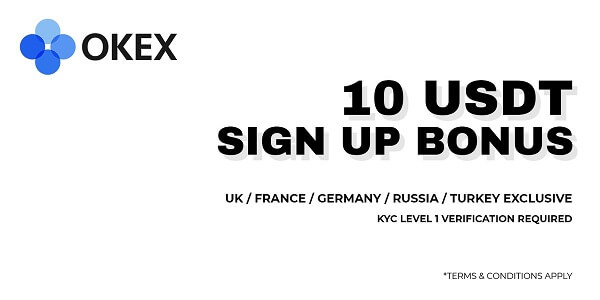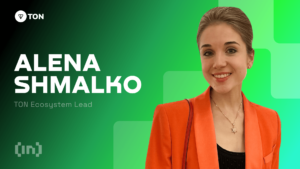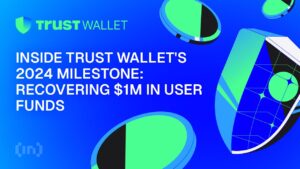How CEO John Lilic Will Transform TLOS and Governance

Telos Foundation recently appointed its new CEO, John Lilic, who previously served as its Executive Director. In a recent exclusive interview with BeInCrypto, Lilic outlined his vision to elevate Telos from a Layer-0 blockchain to a community-owned venture production studio.
With extensive experience at ConsenSys and Polygon, Lilic aims to establish a solid ecosystem that prioritizes decentralization, scalability, and meaningful utility for Telos’ native token, TLOS.
Lilic has a strategic vision for Telos that focuses on establishing a venture production studio model. This model will enable Telos to incubate a broad range of blockchain products internally.
Additionally, this direction aims to make Telos more self-reliant, enabling the foundation to create products that meet its community’s needs without relying on external platforms. Furthermore, the venture studio approach enhances Telos’ ability to innovate while aligning product development with community values.
A cornerstone of this strategy is Telos X, an exchange developed in partnership with Binance’s Link Program. Leveraging Binance’s security protocols and liquidity support, Telos X aims to provide users with a seamless trading experience and quick fiat on- and off-ramps.
Lilic explained to BeInCrypto during Binance Blockchain Week Dubai 2024:
“Bootstrapping an exchange is challenging because it requires both robust security and liquidity from the start. Having these elements at the outset gives us a much stronger foundation for success. This is our current ecosystem view, which we’ll continue to expand as we build and add more to the Telos ecosystem. […] We’re securing licenses across multiple regions to ensure strong compliance from the outset, with robust fiat support from the beginning,”
Telos X and Beyond: Lilic’s Blueprint for a Self-Sustaining Blockchain Ecosystem
In addition to Telos X, Telos is advancing its ecosystem with the upcoming Telos zkEVM (zero-knowledge Ethereum Virtual Machine) and SNARKtor, reinforcing secure interoperability and compatibility with Ethereum. SNARKtor, Telos’ native technology, enables trustless bridges for secure cross-chain transactions, eliminating the need for centralized providers. These innovations enhance performance, strengthen security, expand the TLOS token’s utility, and foster greater engagement among both developers and end-users.
Lilic added:
“The zkEVM sits above that layer and is fully compatible with Ethereum. Not only does it enhance SNARKtor’s capabilities, but we’re also using a hardware-software co-design approach, which enables a high-performance, fast solution. With proving markets growing tremendously, the ZK ecosystem is highly competitive, and we’re aiming to be a key player in that space.”
Another fundamental part of Telos’ strategy under Lilic’s leadership is its unique governance model, rooted in a Delegated Proof of Stake (DPoS) framework. This structure empowers token holders with equal voting rights, making it easy for community members to propose and vote on changes. Unlike networks with centralized treasuries or heavy subsidies, Telos maintains a decentralized approach that encourages long-term engagement and distributed ownership among its community members.
Lilic explained:
“With Telos block producers or validators, if they’re not performing well, the community is very active. If a validator or block producer loses votes, they can be knocked down in rank, meaning they’re no longer a top validator, and they won’t get paid. We believe that building good products and services that are sustainable—because users genuinely want them—is a critical part of what we’re doing. Long term, I think that’s really the only way to do business.”
Telos’ approach to community engagement extends beyond governance, with a strong emphasis on responsive product development. Listening to community feedback led to the creation of EVM 2.0, an upgrade that addresses performance issues identified by users. This example illustrates Lilic’s commitment to delivering value directly to users, prioritizing quality and sustainability over quick, short-term gains.
2025 Vision: How TLOS and Key Upgrades Will Transform Telos’ Reach
The TLOS token serves as a central pillar for Telos’ governance, utility, and ecosystem functionality. Beyond its use in governance, the token supports multiple layers and services across Telos’ platform, including gas fees, block production, and aggregation fees.
He remarked:
“Recently, we had a community-led governance proposal to reduce inflation, which significantly lowered the inflation rate for block producers from around 14% down to 4%. This effort had a meaningful impact on the token.”
In the EVM layer, gas fees are paid in TLOS, and collected fees are burned, much like Ethereum’s burn mechanism. SNARKtor also uses TLOS as its payment currency, supporting Telos, Ethereum, and potentially other chains.
Meanwhile, Telos X will prioritize TLOS in trading pairs, similar to Binance’s approach with BNB. In regions where it is allowed, Telos X will operate a buy-and-burn program based on exchange revenue to support TLOS’s value further.
Lilic emphasized:
“This means that the TLOS token plays a crucial role across our ecosystem, connecting and supporting multiple products and services with tangible utility and functionality.”
Looking toward early 2025, Lilic’s roadmap for Telos centers on advancing the TLOS token’s utility and expanding the network’s global presence. Plans include deploying Telos X in multiple regions with fiat support, and launching the Telos zkEVM and SNARKtor by mid-year.
As Lilic explains, the goal for EVM 2.0 is to establish the “fastest, high-performing EVM in the market, with a thriving ecosystem.” He highlights that many new projects are already poised to onboard once 2.0 is live, marking it as a critical milestone.
Telos’ ZK research also remains a priority, with SNARKtor expected to launch next year. By mid-2025, Lilic anticipates Telos will have EVM 2.0, SNARKtor, and the ZK EVM all operational, supporting a high-performance, compliant ecosystem. He pointed to community-driven initiatives like Takika, their in-house NFT platform, as well as ongoing marketing and event participation to further strengthen community engagement.
Lilic concluded:
“By the middle part of 2025, Telos will be a very robust ecosystem.”
Disclaimer
In compliance with the Trust Project guidelines, this opinion article presents the author’s perspective and may not necessarily reflect the views of BeInCrypto. BeInCrypto remains committed to transparent reporting and upholding the highest standards of journalism. Readers are advised to verify information independently and consult with a professional before making decisions based on this content. Please note that our Terms and Conditions, Privacy Policy, and Disclaimers have been updated.













